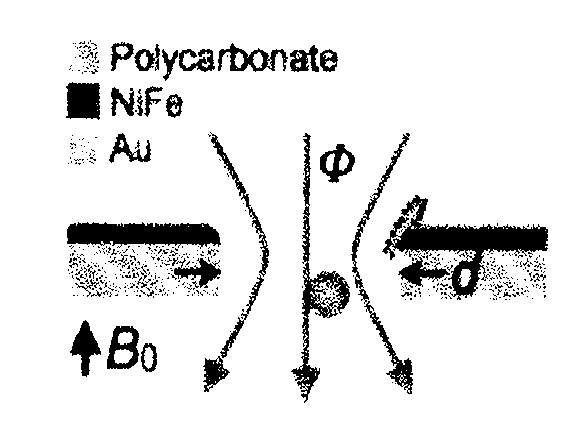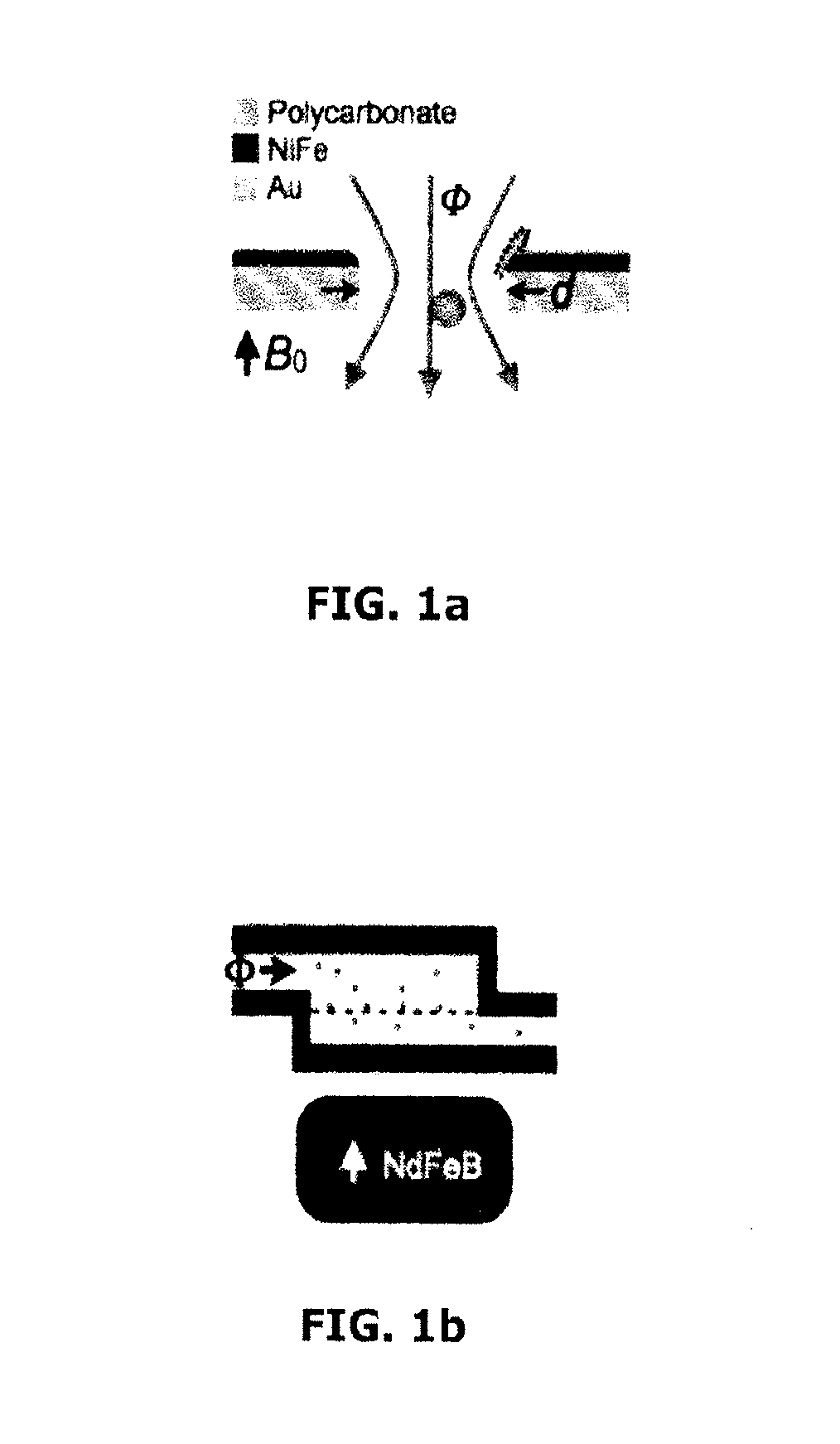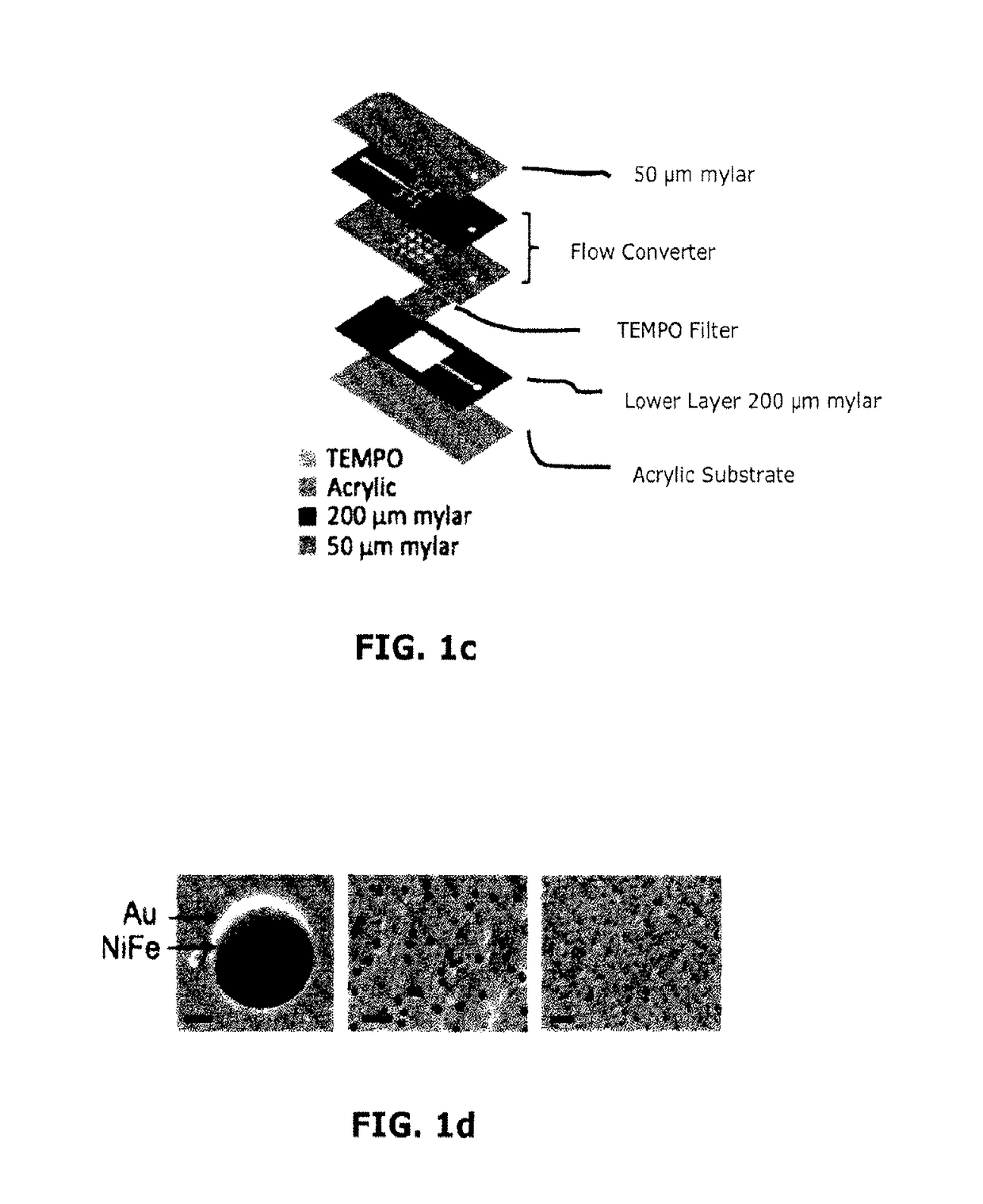Magnetic Separation Filters and Microfluidic Devices Using Magnetic Separation Filters
a technology of magnetic separation filter and microfluidic device, which is applied in the direction of magnetic separation, instruments, chemistry apparatus and processes, etc., can solve the problems of difficult to establish using conventional technology, inability to selectively isolate specific sub-populations of exosomes or differentiate exosomes from other extracellular vesicles,
- Summary
- Abstract
- Description
- Claims
- Application Information
AI Technical Summary
Benefits of technology
Problems solved by technology
Method used
Image
Examples
examples
[0207]TEMPO Filter
[0208]To demonstrate the utility of this platform, a chip with a 5 μm pore size TEMPO was used to efficiently isolate immunomagnetically labeled E. Coli from a suspension of similarly sized bacteria for subsequent downstream analysis.
[0209]The TEMPO filter comprises a dense array (˜2000 / mm2) of track-etched micropores coated with a thin layer of soft magnetic material (FIG. 1a). The micropores create large gradients ∇B, which imparts strong magnetic forces F˜(B·∇)B on magnetic nanoparticle *MNP) labeled cells as they pass through the pores. Targeted cells are trapped and isolated from the unlabeled cells which flow through the filter unimpeded. The chip sits in a large uniform magnetic field |B|=0.2 T, provided by a small external neodymium iron boron (NdFeB) magnet. This field magnetized both the MNP labeled cells and the TEMPO filter. When the NdFeB magnet is removed, the force disappears and the trapped cells can be efficiently released.
[0210]Microfluidic Chip
[0...
PUM
 Login to View More
Login to View More Abstract
Description
Claims
Application Information
 Login to View More
Login to View More - R&D
- Intellectual Property
- Life Sciences
- Materials
- Tech Scout
- Unparalleled Data Quality
- Higher Quality Content
- 60% Fewer Hallucinations
Browse by: Latest US Patents, China's latest patents, Technical Efficacy Thesaurus, Application Domain, Technology Topic, Popular Technical Reports.
© 2025 PatSnap. All rights reserved.Legal|Privacy policy|Modern Slavery Act Transparency Statement|Sitemap|About US| Contact US: help@patsnap.com



